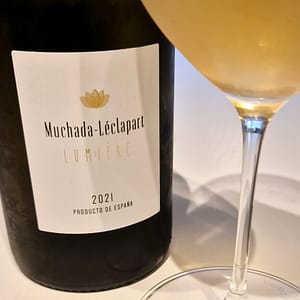This is the second article in a series of three, about unfortified wines from the sherry district. This white table wine is just brilliant. It’s a palomino without additions, not even any influence of flor. It’s a sublime expression of grape and place.
Alejandro Muchada and his partner David Léclapart make incredible terroir-driven wines full of saline minerality, and always with a lovely texture. From three plots of a total of 3.6 hectares in Sanlúcar de Barrameda, Alejandro works according to biodynamic principles, and in the cellar he shows a hands-off philosophy..
The grapes for this wine is taken from Viña La Platera Vieja in Miraflores Baja, that is a 1.2 hectares plot. The soil is calcareous albariza, with a hard rock albariza type called “tosca cerrada”, under clayey limestone. The orientation is west and the vines are more than 60 years old.
The grapes were hand-harvested, directly pressed for 3-4 hours, spontaneously fermented and matured for 12 months on lees in used barrels. Bottled without filtering.

Lumière 2021 (Muchada-Léclapart)
Yellow colour, slightly cloudy. Aroma of yellow apples, flowers, almonds, black olives and citrus and a touch of salt. Concentrated, medium-bodied, fruity in the mouth with almonds, smooth texture, mineral. Finishes very long. It has this extra nerve that is hard to define, but makes it a great wine. As the name might imply: Brilliant.
Price: High
Leave a Comment









